I have to warn you all that this innocent piece of writing about the television programme Lassie may turn into more of a therapy session for me. My parents eventually banned me from watching this (the same also applied to The Littlest Hobo) on the grounds that I couldn’t get through it without sobbing and then having nightmares about wandering canines. I still can’t watch anything that involves animals behaving heroically and, in fact, just looking at a still of the opening titles of Lassie has me reaching for a cushion to both hide behind and use to soak up my tears.
Lassie was really the stand-out of all the ‘animal saving the day by barking and tilting their head at a human’ television programmes (this category also includes Flipper the dolphin, although he didn’t bark, obviously) and has inspired many a parody. ‘What’s that you say, old fella? There’s a small child trapped down a disused well three miles away?’
Lassie, a Rough Collie dog, was originally created by the English novelist and screenwriter Eric Knight in a short story that was published in American magazine The Saturday Evening Post in 1938. She is sometimes confused with another dog with the same name, also a Rough Collie, in a short story written by Elizabeth Gaskell in 1859. The second Lassie reincarnation does sound suspiciously like it may have been ‘borrowed’ from the first: Gaskell’s tale had the dog rescuing a small boy from a snowstorm…
Knight then turned his tale into the novel Lassie Come Home in 1940 which was then adapted into the 1943 MGM film of the same name. Roddy McDowall starred as the character Joe Carraclough, with Pal the rough collie taking the lead role.
Pal continued to appear as Lassie for a further six MGM films as well as two pilots for the television series which was called simply Lassie. They were Pal’s last professional engagements but, before his death in 1958, he sired the first in a long line of rough collies who stepped up and continued his acting dynasty.
Lassie the TV show hit US television screens in September 1954 and the exploits of the brave collie filled 19 series (591 episodes of doggy derring-do!), finally finishing in March 1973. The show changed from black and white to colour in 1965.
Lassie began her adventures living on a farm with her child companion Jeff, his mother and grandfather. In the fourth series she is taken in by Timmy and his adoptive parents before she starts working alongside the United States Forest Service Rangers. So far, so good. It was the next stage in Lassie’s life that used to slay me: she spent a year travelling around by herself, helping out various people along the way before trotting off alone, occasionally looking wistfully back along the path she’d just come along. It was that look, coupled with her being on her own, which made me reach for the tissues.
The final two seasons of Lassie saw her finding permanent residence at a children’s home (yep, still playing on my emotions here although I think, by now, my parents had locked the television away whenever any animal-based programme was scheduled).
The man responsible for ensuring the title role was played so perfectly was animal trainer Rudd Weatherwax. Despite being a female dog in the show, all the canines playing the role have been male (the female that was apparently first hired to play Lassie in Lassie Come Home was replaced by Pal after refusing to go near water in one scene) for a couple of reasons. Firstly, Lassie is portrayed as a heroic dog and male collies tend to be bigger and, therefore, look more imposing. Secondly, although both sexes of the dog moult in the summer, when the show was filmed, males have thicker fur in the first place and so don’t look quite as thin when it happens. For the dog feminists amongst you, however, you’ll be pleased to know that some of Lassie’s stunt dogs have been female!
After the original Lassie, Pal, retired his son, Lassie Junior, took up the role. He stayed with the show until 1959 when he also retired, this time on health grounds. Thankfully, Lassie Junior’s son, Spook, was ready to take on the responsibility until the end of 1960, after which his brother, Baby, stepped up for the following six years. Two further generations then played Lassie until the end of the show in 1973, Mire and Hey Hey. They didn’t stop there: Hey Hey’s son, Boy, then played Lassie in the film The Magic of Lassie and Boy’s son, The Old Man, took on the lead in a later TV series, The New Lassie from 1989 to 1991. Then there was Howard, who was in the third series in 1997. So beloved is the Pal dynasty that when Howard was replaced with a dog that didn’t descend from the original Lassie, the public uproar was such that the ‘outsider’ was removed and the role given to Hey Hey II!
In 2005 the franchise tried again with a non-Pal descended Lassie actor. His name was Mason and he featured in a remake of Lassie Come Home but by the time Lassie’s Pet Vet – a new TV series – hit the screens in 2006, Lassie was back to being played by the 10th generation of Pal-sired collies, Rockie.
Lassie was a much loved character and holds a place in iconic children’s television history. It won Emmy awards in 1955 and 1956 for Best Children’s Program and a 1956 Peabody Award. It was also honoured with three stars on the Hollywood Walk of Fame (including one for Lassie herself) and it was given a U.S. Department of Agriculture Conservation Award for promoting conservation during the season when Lassie was employed by the Forest Service Rangers. Off the back of this Lassie was also invited to visit the White House to meet the First Lady.
“What’s that Lassie? You’re fed up of hearing me snivel to myself as I recount all your tales of bravery and selflessness and you’d like me to go away now? Ok, then: good dog!”







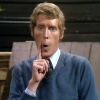
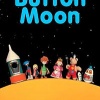


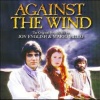
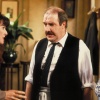
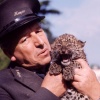
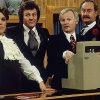
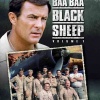
Do You Remember Lassie?
Do You Remember Lassie?